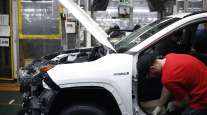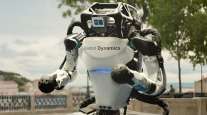Toyota Puts Fuel-Cell Semi-Truck to Test at Los Angeles Port

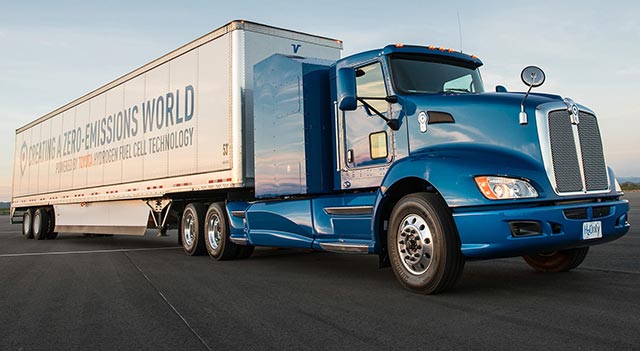 Toyota Motor Corp.
Toyota Motor Corp.The newest heavy-duty truck set to operate at the Port of Los Angeles emits an unusual byproduct that California could certainly use more of: water.
Toyota Motor Corp.’s hydrogen fuel-cell truck, which will emit nothing but vapor, will begin a feasibility study at the port this summer. The Japanese automaker unveiled the concept April 19 and will start testing it in short-distance fleets that run back and forth between the city’s docks and nearby warehouses operated by retailing giants.
RELATED: Mack expands test of hybrid trucks
Swapping internal-combustion engines for fuel-cell stacks will support Governor Jerry Brown’s efforts to cut emissions from freight movement in California. The ports of Long Beach, Los Angeles and Oakland handle 40% of U.S. container traffic, with commercial shipments generating half of California’s toxic diesel-soot emissions and 45% of the nitrogen oxide that plagues L.A. with the nation’s worst smog.
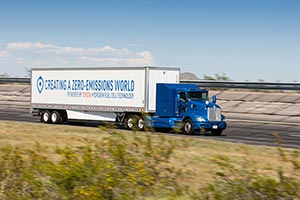 Toyota Motor Corp.
Toyota Motor Corp.“We think this is a really important step to demonstrate the capability of fuel cell,” Bob Carter, the president of Toyota’s U.S. sales unit, said in an interview with Bloomberg Television. Toyota developed the powertrain for the semi-truck, which was built by Paccar Inc., he said.
Fuel-Cell Push
The Class 8 truck prototype is the latest indication Toyota intends to maintain a leading position in the nascent fuel-cell vehicle market. The carmaker put its Mirai fuel-cell sedan on display April 18 in China ahead of the Shanghai auto show as it jostles with the likes of Hyundai Motor Co. and Honda Motor Co. in the race to dominate the sector seen as a possible new frontier in greener transportation.
RELATED: California funds greater use of electric-powered heavy-duty trucks
The concept truck’s fuel-cell system, called Project Portal, is powered by the fuel cell stacks from two Toyota Mirai sedans, according to the Toyota City, Japan-based company.
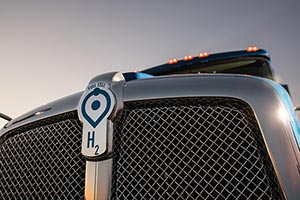 Toyota Motor Corp.
Toyota Motor Corp.Though it’s powered by hydrogen, the fuel-cell truck Toyota will test is no shrinking violet. At 670 horsepower, it delivers at least 12% more force than the biggest version of the ISX15 diesel family that Cummins Inc. describes on its website as North America’s most popular heavy-duty engine. During normal operation, the truck will travel more than 200 miles between each refueling, Toyota said.
“The port is unable to grow at all until it can show there are no incremental emissions coming from trucks or ships or whatever,” Craig Scott, Toyota’s U.S. manager for advanced technologies, said in an interview. “That is a big task. And we don’t think there’s another heavy-duty vehicle on the market — with zero-emission and technology and the same performance as a diesel — that isn’t a fuel cell.”
Hydrogen Vs. Electric
Plug-in semi-trucks would require such heavy batteries that they’d have to sacrifice most of their freight-carrying capacity, Scott said. Tesla Inc. CEO Elon Musk said last week the electric carmaker will unveil a semi-truck in September.
To maximize the environmental benefits of its fuel-cell tests at the Los Angeles port, Toyota also is helping to develop renewable hydrogen sources, Scott said. These could include biomethane made from manure the state may collect from farmers.
RELATED: Nikola to launch hydrogen-electric truck in 2020
Gov. Brown wants 100,000 zero-emission freight-hauling machines to be operating by 2030 under what he calls his California Sustainable Freight Action Plan. These could include self-driving cranes on the docks as well as semi-autonomous and battery-powered trucks and forklifts in nearby marshaling yards.
“For now, this is short-haul feasibility study,” Carter said in prepared remarks delivered April 19 at the port. “Who knows what it will lead to, perhaps longhaul capability.”


